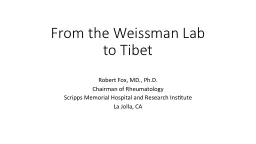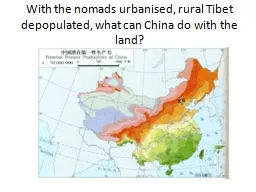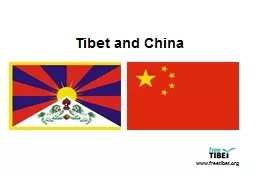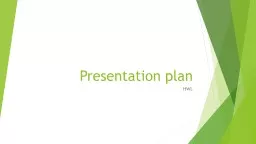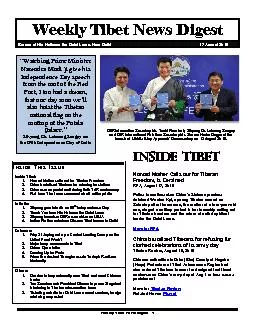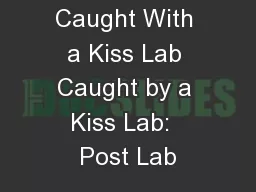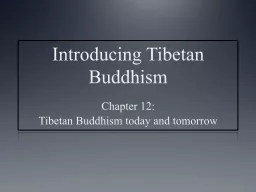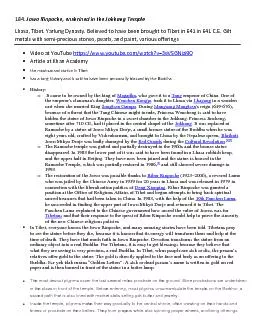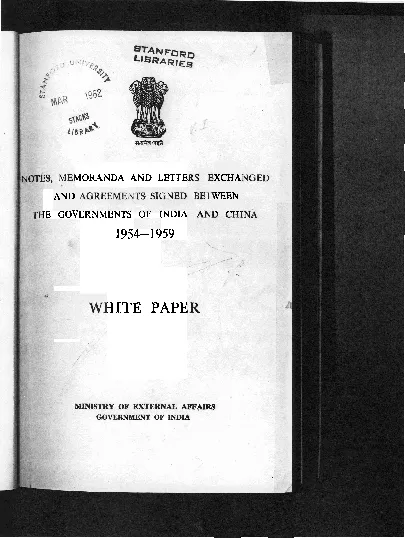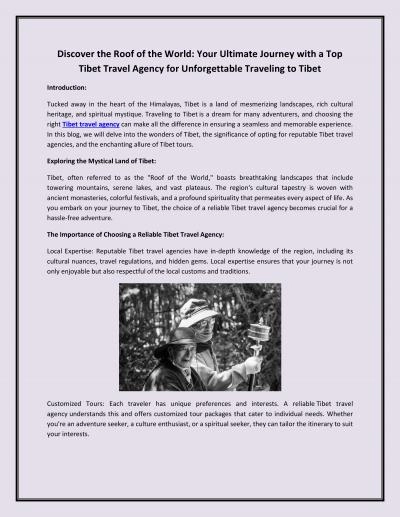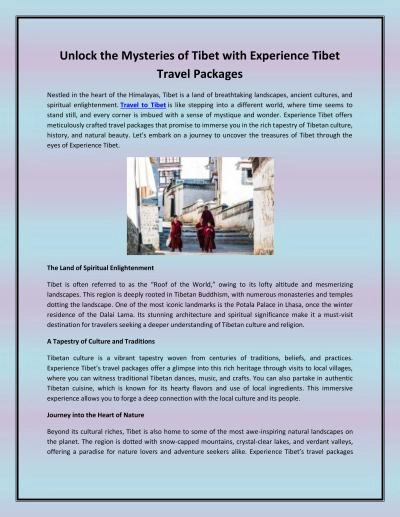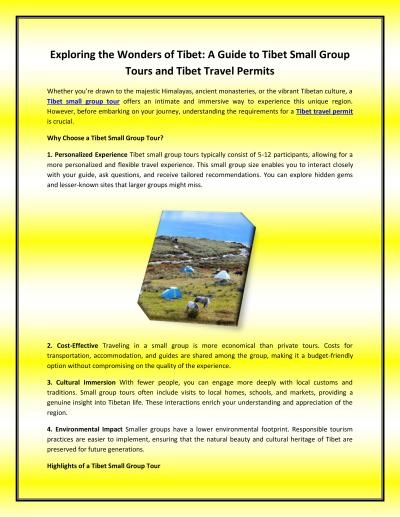PPT-From the Weissman Lab to Tibet
Author : cappi | Published Date : 2022-06-28
Robert Fox MD PhD Chairman of Rheumatology Scripps Memorial Hospital and Research Institute La Jolla CA Happy Birthday Irv I was in Weissman lab until 1980 Arrived
Presentation Embed Code
Download Presentation
Download Presentation The PPT/PDF document "From the Weissman Lab to Tibet" is the property of its rightful owner. Permission is granted to download and print the materials on this website for personal, non-commercial use only, and to display it on your personal computer provided you do not modify the materials and that you retain all copyright notices contained in the materials. By downloading content from our website, you accept the terms of this agreement.
From the Weissman Lab to Tibet: Transcript
Download Rules Of Document
"From the Weissman Lab to Tibet"The content belongs to its owner. You may download and print it for personal use, without modification, and keep all copyright notices. By downloading, you agree to these terms.
Related Documents

